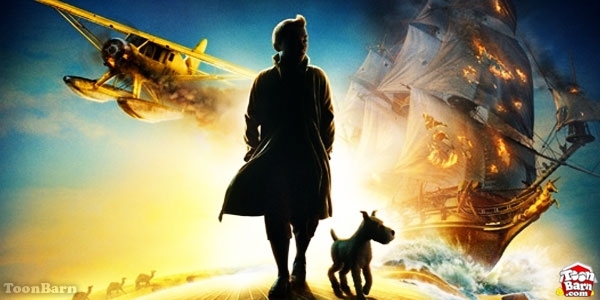
Image Courtesy: Toonbarn
The Adventures of Tintin is about to release. Steven Spielberg is back with something that I always wanted to see, a Tintin film backed by Hollywood biggies, their wallet and their technology. If that is not enough, Spielberg also has Peter Jackson by his side. So, I take this opportunity to indulge in some nostalgic rambling about the most important source of entertainment as well as learning from my eventless and solitary childhood.
The Comics Scene in the 1990’s India:
In the 80’s and 90’s small town India devoid of satellite channels, kids did not really have too many options. Especially for the ones who were twelfth men in their respective gully cricket teams, reading comics was a more respectable pastime. The comic scene was dominated by Anant Pai’s oeuvre and to a lesser extent by Diamond comics. For slightly older ones, there was Raj comics, Manoj comics and some other brands. While the American superheroes were also familiar, not many were aware of European classics like Tintin and Asterix as they were rare as well as expensive. Thankfully, even in those hostile conditions, certain people took the trouble to sensitize themselves about more eclectic works and also introduce them to others. In that sense I was a comics snob and mostly concentrated on Tintin and Asterix.
Why Tintin worked and still works:
Hergé passed away in 1983. The cold war was also over after a few years. Most of the major plot elements in Tintin were no longer relevant by the 90s. But still, Tintin remained and still remains an immensely enjoyable series in many ways. Hergé differentiated it from others by virtue of sheer ambition. He sought to explore every nook and corner of the world, authentically portray diverse cultures and geographies, drew allegories of contemporary international politics, ensured pinpoint precision and achieved the finesse of gripping detective fictions as well as classic satires. Tintin worked for everyone, primarily because it dealt with important issues like international politics, organized crime, corporate greed, space race and slavery while maintaining a consistent balance between humour and adventure. Besides, there was always a sense of profound humanism that could connect to everyone instantly. This humanism can be seen in its most endearing yet vulnerable form in Tintin in Tibet.
The diversity of plot elements in Tintin can somewhat be attributed to the diverse nature of its source materials. Hergé, as it can be assumed from his repertoire, was a well-read man. Initially, Amazonian rainforests, Incas and ancient Egyptians seemed to be his primary interests. Real expeditions into Egypt and Peru influenced his characters and plots. It is also agreed that Gaston Laroux’s Bride of the Sun inspired the basic plotline of Prisoner of the Sun. But at the same time one cannot help but notice the influence of early masters such as Arthur Conan Doyle in building up the adventures. Similarly, the impact of Nazi occupation in the early stories and that of the Cold War in the later adventures was more than noticeable. Later on, the focus shifted to more relevant and contemporary political events but his penchant for research and detailing remained the same.
Tintin in India:
Tintin never had a complete adventure in India and this is one of the saddest realizations for an Indian fan. He visits India in Cigars of The Pharaoh, but that was before Hergé discovered his mojo for research (which incidentally started with its follow up adventure, Blue Lotus after Hergé was inspired by his Chinese friend Chang Chong-jen to know more about the cultures he depicts). That is why depiction of India in that adventure remained a repetition of popular western stereotypes replete with maharajahs and fakirs. In comparison, Blue Lotus had an authentic depiction of China under Japanese rule. Decades later, Tintin landed in Delhi en route to Tibet. This time, visuals were more authentic with depiction of several landmarks in the city and also a reference to Mahatma Gandhi. But unfortunately Tintin never got to spend enough time in India.
Expectations from Spielberg’s Tintin:
Spielberg is apparently fusing the plotlines of three adventures in his film, The Crab with the Golden Claws, The Secret of the Unicorn and Red Rackham’s Treasure. The biggest question here is whether he can avoid the pitfalls of adapting from a highly celebrated source. I have had the experience of watching a few animated Tintin films. Most of them were disappointing, especially because they seemed to skip a few exciting frames here and there. Besides, a lot of humour in the dialogues is lost in the films. There is a certain charm in reading Captain Haddock’s abuses that cannot be relished to a similar extent with moving images simply because you never get enough time to grasp those. It takes someone exceptional to make it work and who better than Andy Serkis to do that?